Creating a Chatbot for E-commerce Without Coding
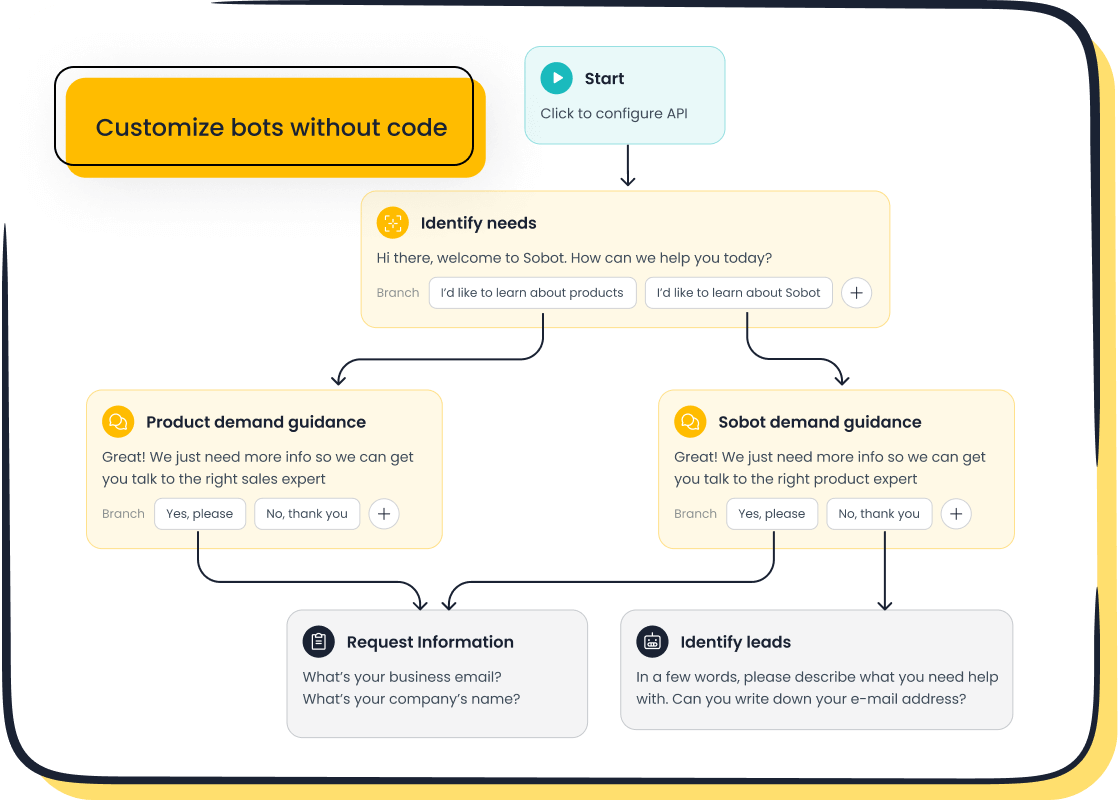
Creating an ecommerce chatbot has never been easier. You don't need coding skills to build one, and the benefits for your online store are massive. Did you know chatbot-driven transactions in ecommerce are expected to hit $112 billion by 2024? That’s a big deal! Whether it’s answering customer questions instantly or guiding buyers through their shopping journey, chatbots enhance the entire experience.
Platforms like Sobot make this process effortless. With Sobot’s no-code chatbot solution for ecommerce, you can automate repetitive tasks, offer 24/7 support, and even boost conversions by up to 20%. Modern shoppers love quick, personalized interactions, and a chatbot helps you deliver just that. Why wait? It’s time to take your ecommerce game to the next level.
Why Use an Ecommerce Chatbot for Your Online Store
Benefits of Chatbots in E-commerce
Ecommerce chatbots are transforming the way businesses interact with customers. They’re not just tools; they’re game-changers. Imagine having a virtual assistant that works 24/7, answers questions instantly, and never takes a break. That’s exactly what chatbots do. They handle repetitive tasks, like answering FAQs, so your team can focus on more complex issues. Plus, they’re cost-effective. Businesses save around 30% on customer support costs by using chatbots.
Chatbots also improve response times dramatically. Companies have reported a 60% decrease in first reply time, with one-touch response rates reaching 80%. This means customers get the help they need faster, leading to happier experiences. And here’s the kicker: chatbots can answer up to 79% of routine questions, making them a reliable first line of support.

Sobot’s chatbot solution for ecommerce takes this a step further. It’s multilingual, operates 24/7, and doesn’t require coding to set up. Whether you’re a small business or a global brand, it’s designed to fit your needs perfectly.
Did you know? Businesses using chatbots save an average of $300,000 per year. That’s money you can reinvest into growing your store.
Enhancing Ecommerce Customer Support with AI Chatbots
Customer support is the backbone of any successful online store. But let’s face it—managing high volumes of inquiries can be overwhelming. That’s where ecommerce chatbots shine. They provide instant responses, reducing wait times and improving customer satisfaction. In fact, 69% of customers say they’d use a chatbot if it resolved their issue quickly.
AI-powered chatbots, like Sobot’s, go beyond basic support. They use advanced AI to understand customer intent and provide accurate answers. This means fewer escalations to human agents and more satisfied customers. For example, OPPO, a global smartphone brand, achieved an 83% chatbot resolution rate with Sobot’s solution. This allowed their agents to focus on complex queries, improving overall efficiency.
Chatbots also offer omnichannel support, interacting with customers across platforms like WhatsApp, SMS, and social media. This ensures a seamless experience, no matter where your customers are. And with features like real-time speech recognition and predictive analytics, chatbots are setting new standards for ecommerce customer support.
Boosting Sales and Engagement Through Chatbot Solutions
Chatbots don’t just support customers—they drive sales. By simplifying the shopping process, they make it easier for customers to complete purchases. Domino’s, for instance, saw a 46% increase in online sales after introducing its chatbot, Dom.
But it’s not just about transactions. Chatbots enhance customer engagement by offering personalized recommendations and proactive messaging. Research shows that targeted interactions through chatbots can boost engagement by 70% and conversion rates by up to 2.8 times.
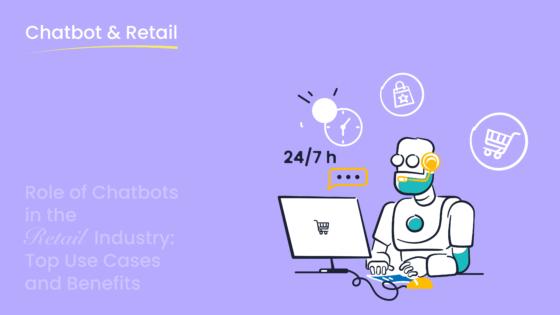
Sobot’s chatbot solution for ecommerce is designed with sales in mind. It uses smart self-service and real-time intent assistance to guide customers through their journey. This approach has been proven to increase sales by 67% on average. Plus, it captures leads effectively, helping you grow your customer base.
| Company | Description | Impact |
|---|---|---|
| H&M | AI-powered chatbot assists with product recommendations, sizing, and order tracking. | Enhanced customer interactions, increased engagement and sales. |
| Amazon | Alexa enables voice-based shopping and customer support. | Simplified shopping experience, improved customer engagement. |
Pro Tip: Use chatbots to send personalized offers and reminders. It’s a simple way to reduce cart abandonment and increase sales.
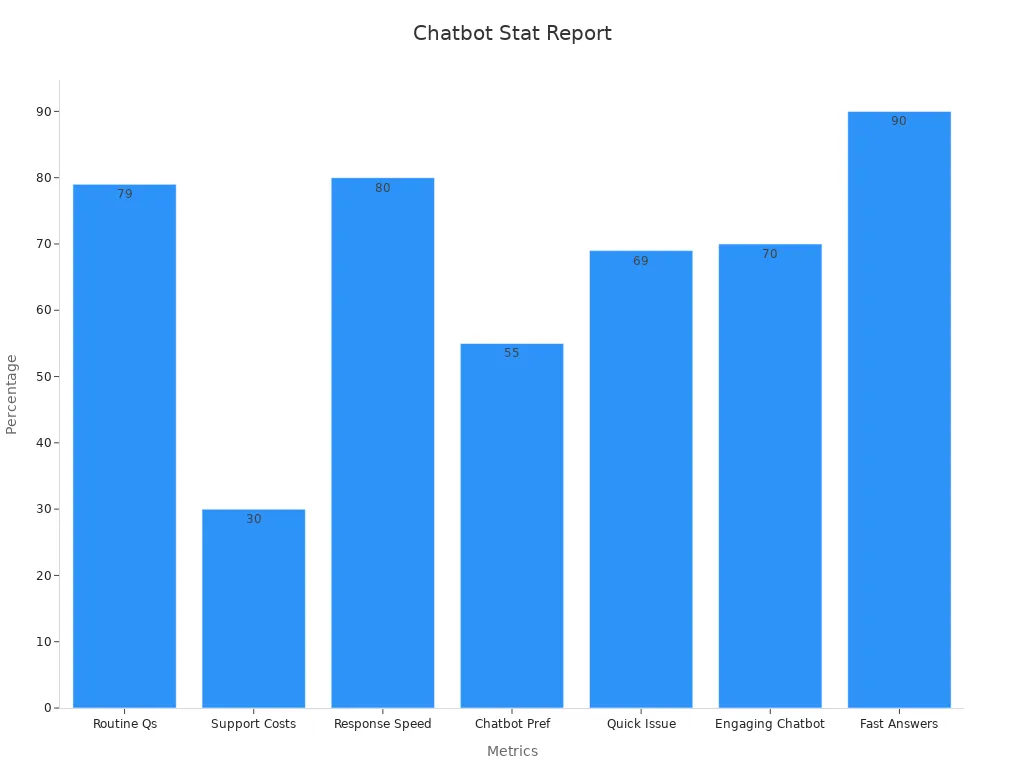
Tools for Building a No-Code Chatbot Solution for Ecommerce
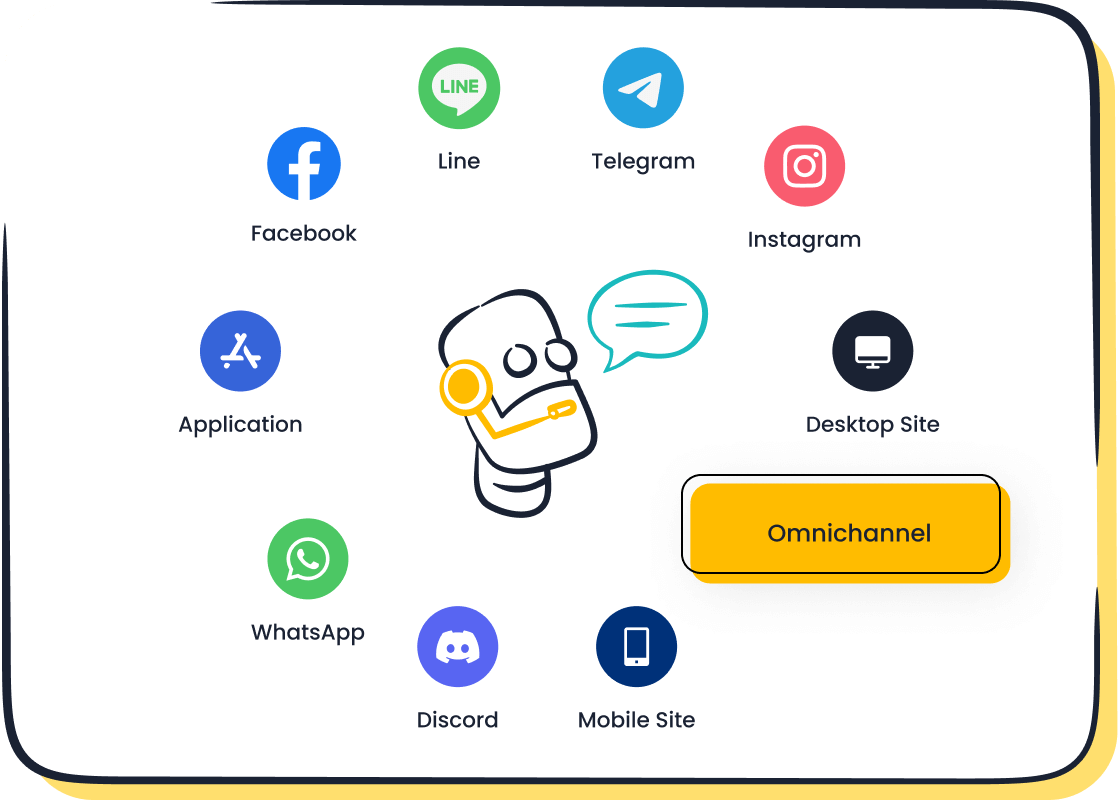
Overview of No-Code Chatbot Platforms
No-code chatbot platforms have revolutionized how businesses interact with customers. These tools let you create a chatbot without writing a single line of code. They’re perfect for ecommerce businesses looking to save time and resources. With drag-and-drop interfaces and pre-built templates, you can design a chatbot that fits your brand in just a few clicks.
Why are these platforms so popular? They’re efficient and accessible. You don’t need a tech background to use them. Plus, they’re scalable, meaning they grow with your business.
A study from Grand View Research states that the bot economy will total $1.25 billion by 2025, while Gartner predicts that 85% of businesses will have some sort of chatbot automation implemented by 2020. This indicates a strong trend towards the adoption of no-code chatbot platforms, highlighting their efficiency and necessity in modern customer service.
Features of Sobot's Chatbot for E-commerce
Sobot’s chatbot stands out as a top choice for ecommerce businesses. It’s packed with features designed to enhance your customer interactions and boost sales. Here’s what makes it special:
- 24/7 Availability: Your chatbot never sleeps. It’s always ready to assist customers, even during peak shopping hours.
- Multilingual Support: Communicate with customers in their preferred language, breaking down barriers and improving satisfaction.
- Omnichannel Integration: Whether it’s WhatsApp, SMS, or social media, Sobot’s chatbot connects seamlessly across platforms.
- No Coding Required: The point-and-click interface makes setup a breeze. You can design workflows and responses in minutes.
- Smart Self-Service: It doesn’t just answer questions—it guides customers through their shopping journey, increasing conversions by 20%.
Sobot’s chatbot is more than a tool. It’s a partner that helps you save costs, improve efficiency, and grow your ecommerce website.
Comparing Popular Chatbot Tools for Online Stores
When choosing a chatbot for your ecommerce website, it’s essential to compare features and performance metrics. Here are some key factors to consider:
- Retention Rate: This shows how well the chatbot keeps users engaged over time.
- Interactions per User: A higher number indicates that the chatbot is meeting customer needs effectively.
- Goal Completion Rate (GCR): This measures how often the chatbot helps users achieve their objectives, like completing a purchase.
- Click-through Rate (CTR): This reveals how well the chatbot drives users to take action, such as clicking on a product link.
Sobot’s chatbot excels in these areas. Its smart self-service and proactive messaging features ensure high engagement and conversion rates. Plus, its customizable design means you can tailor it to your specific needs, giving you a competitive edge in the ecommerce space.
Step-by-Step Guide to Creating an Ecommerce Chatbot Without Coding

Define Your Chatbot’s Purpose and Goals
Before you dive into building your ecommerce chatbot, take a moment to define its purpose. What do you want your chatbot to achieve? Is it to answer FAQs, assist with product recommendations, or guide customers through the checkout process? Setting clear goals ensures your chatbot aligns with your business needs and delivers value to your customers.
For example, if your goal is to reduce customer support costs, your chatbot should focus on automating repetitive queries. If boosting sales is your priority, it should provide personalized product suggestions and proactive messaging. Clear objectives also help you measure success using metrics like conversion rates, customer satisfaction, and cost per conversation.
| Metric | Description | Example |
|---|---|---|
| Cost per Conversation | Measures the financial impact of the chatbot. | $2 per conversation handled |
| Conversion Rate | Percentage of conversations resulting in a desired action (e.g., sale). | 10% of conversations resulting in a sale |
| Return on Investment (ROI) | Financial return generated by the chatbot. | 200% return on investment |
| Customer Lifetime Value (CLV) | Total value of a customer over their lifetime with the business. | $10,000 lifetime value |
| Intent Recognition Rate | Percentage of correct identification of user intent by the chatbot. | 80% correct intent recognition |
| Abandonment Rate | Percentage of users who abandon interaction before completing their task. | 15% abandonment rate |
| Conversation Completion Rate | Percentage of users completing their intended task with the chatbot. | 70% completion rate |
Pro Tip: Start small. Focus on one or two goals initially, then expand your chatbot’s capabilities as you gather insights and feedback.
Choose the Right No-Code Platform
Now that you’ve defined your goals, it’s time to pick the right no-code platform to create a chatbot. No-code platforms make it easy for anyone to build helpful virtual agents without writing a single line of code. They’re perfect for ecommerce businesses looking to save time and resources.
Here are some popular no-code platforms to consider:
- Botsonic: A user-friendly AI chatbot builder.
- Chatfuel: Known for its intuitive interface.
- Tars: Ideal for creating conversational landing pages.
- Landbot AI: Offers a visual interface for designing chatbots.
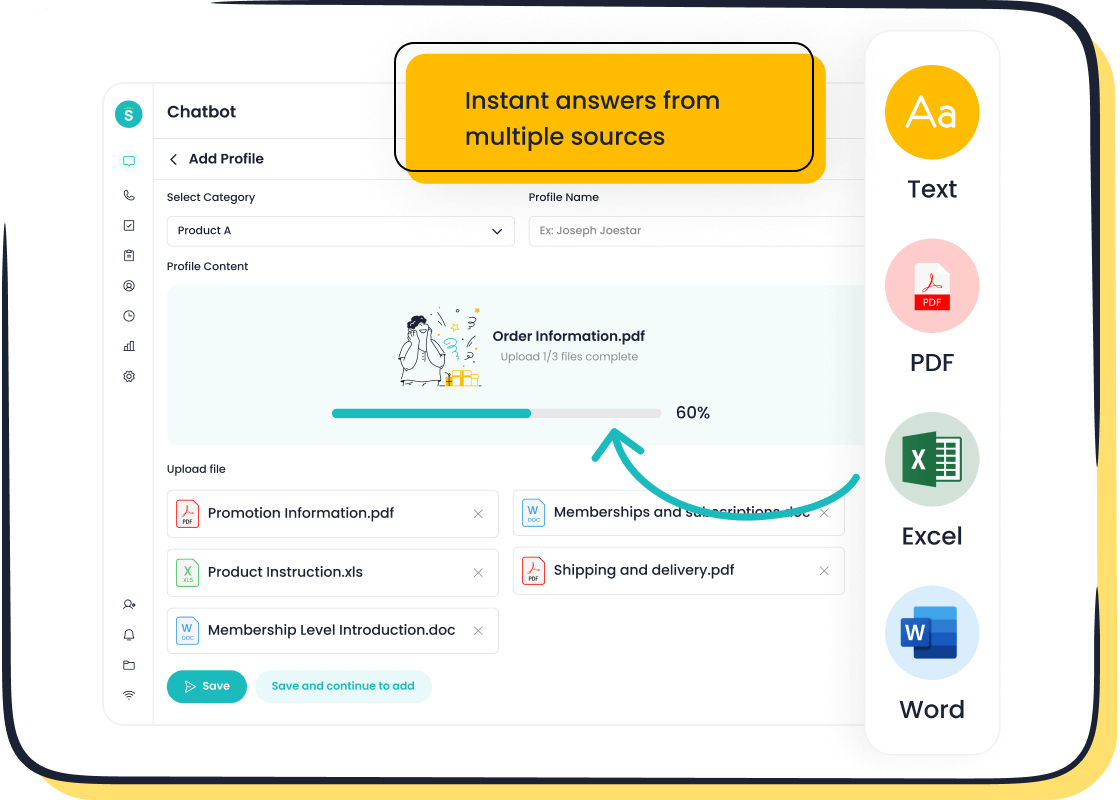
- Sobot: A standout choice for ecommerce, offering multilingual support, omnichannel integration, and smart self-service features.
When choosing a platform, consider factors like ease of use, scalability, and integration capabilities. For instance, Sobot’s chatbot solution is designed specifically for ecommerce. It’s easy to set up, works across multiple channels, and helps you boost conversions by up to 20%.
| Criteria | No-Code Platforms | Low-Code Platforms |
|---|---|---|
| Programming Skills Required | None | Some programming knowledge may be needed |
| Target User Base | Business people, non-programmers | Developers and IT teams |
| Project Complexity | Suitable for simple to moderate projects | Ideal for complex applications |
| Integration Needs | Basic integrations available | Advanced integrations with APIs and data sources |
| Delivery Time | Quick deployment | Longer due to complexity |
| Control Over Code | Limited | Greater control and customization |
| Security Concerns | Basic security measures | Enhanced security features |
Did you know? Businesses using no-code platforms can deploy chatbots 60% faster than those relying on traditional development methods.
Design Conversational Flows and Responses
The heart of any conversational chatbot lies in its conversational flow. This is where you map out how your chatbot interacts with users. Think of it as scripting a dialogue for a play—every question, response, and action needs to feel natural and engaging.
Start by identifying the most common customer queries. For example, “What’s your return policy?” or “Do you have this item in stock?” Then, create a flowchart that outlines how the chatbot should respond. Tools like Sobot’s point-and-click interface make this process simple. You can drag and drop elements to design workflows, ensuring your chatbot provides accurate and helpful responses.
Here’s a quick comparison of traditional vs. conversational marketing:
- Traditional Marketing: Kate fills out a web form, waits for a week, and finally gets a demo call, taking up to a month.
- Conversational Marketing: Kate engages with a chatbot, gets qualified quickly, and schedules a demo within an hour.
Well-designed conversational flows don’t just answer questions—they guide users toward completing their goals. Whether it’s making a purchase or signing up for a newsletter, your chatbot should make the process seamless. Research shows that conversational chatbots can boost customer engagement by 70% and reduce cart abandonment rates significantly.
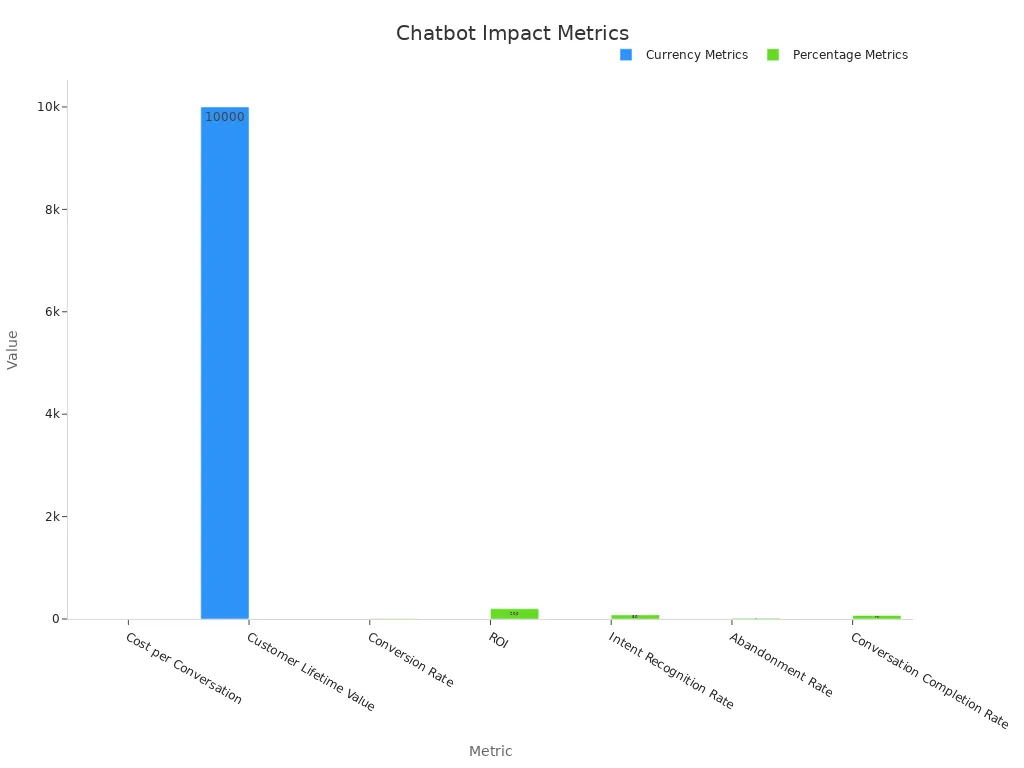
Pro Tip: Test your chatbot’s flow with real users. Their feedback will help you refine responses and improve the overall experience.
Test and Optimize Your Chatbot
Testing your chatbot is like giving it a dress rehearsal before the big show. You want to make sure it performs flawlessly when interacting with your customers. Start by running your chatbot through common customer scenarios. For example, test how it handles FAQs, product recommendations, and checkout assistance. Does it provide accurate answers? Is the tone friendly and helpful? These are the questions you need to answer.
A/B testing is another powerful tool. It allows you to compare different versions of your chatbot to see which one performs better. For instance, you can test two welcome messages to find out which one leads to more conversions. Companies like Magoosh have used this method to increase sales by optimizing their chatbot’s welcome messages. Similarly, Lifull achieved 10 times more user leads by improving their A/B testing success rates.
| Case Study | Improvement | Description |
|---|---|---|
| Magoosh | Increased Sales | Tested welcome messages for trial customers, boosting premium account purchases. |
| NBCUniversal | Enhanced User Experience | Homepage test for Vizio TVs led to 10% more viewership and doubled 7-day retention. |
| Lifull | Optimized Performance | Increased A/B testing success rates by 2.8x, resulting in 10X more user leads. |
Don’t forget to monitor key metrics like response time, intent recognition rate, and conversation completion rate. These numbers tell you how well your chatbot is performing. If you notice any gaps, tweak the conversational flow or update the knowledge base. Tools like Sobot’s chatbot make optimization easy with built-in analytics and reporting features. You can track performance in real time and make adjustments on the fly.
Pro Tip: Involve real users in your testing phase. Their feedback can uncover issues you might miss, helping you refine your chatbot for a better customer experience.
Launch and Integrate Your Chatbot with Your Store
Once your chatbot is ready, it’s time to launch it into your ecommerce store. This step is crucial because proper integration ensures your chatbot delivers maximum value. Start by embedding it on your website. Place it on high-traffic pages like the homepage, product pages, and checkout. This increases visibility and ensures customers can easily access it when they need help.
Integration doesn’t stop at your website. Modern chatbots, like Sobot’s, offer omnichannel support. This means you can connect your chatbot to platforms like WhatsApp, SMS, and social media. By doing this, you create a seamless experience for your customers, no matter where they interact with your brand. Multichannel conversations also improve engagement and help you reach a broader audience.
Here’s what you can achieve by integrating your chatbot effectively:
- Increased brand awareness through better customer communication.
- Enhanced engagement by guiding customers through their shopping journey.
- Streamlined sales processes with automated product suggestions and checkout assistance.
- Improved post-sale support for order issues, refunds, and inquiries.
- Valuable customer feedback collection to refine your chatbot’s functionality.
- Reduced operational costs by decreasing the need for human agents.
- Abandoned cart recovery through timely reminders, boosting sales by up to 67%.
Did you know? Chatbots can reduce response times significantly, providing instant answers to customer inquiries. This not only improves the shopping experience but also builds trust in your brand.
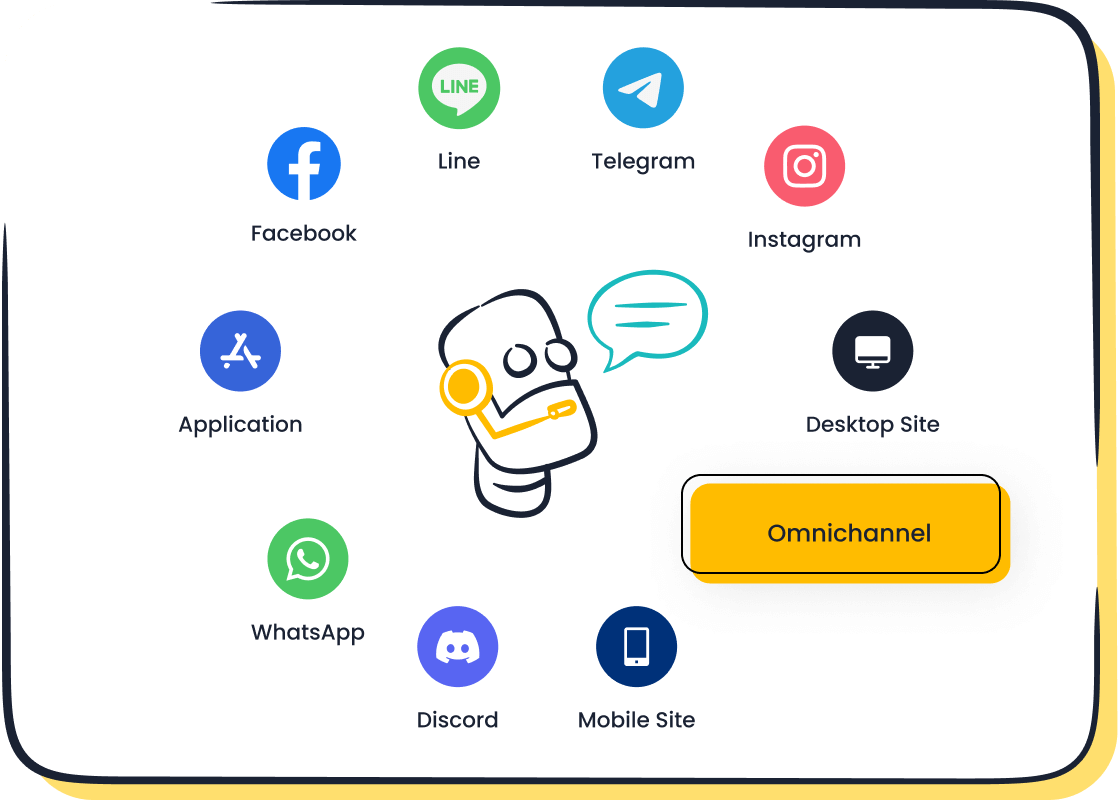
Sobot’s chatbot takes integration to the next level. It supports advanced technologies like augmented reality, creating unique shopping experiences. Imagine a customer using your chatbot to visualize how a piece of furniture would look in their home. That’s the kind of innovation that sets your store apart.
Pro Tip: After launching your chatbot, keep an eye on its performance. Use analytics to identify areas for improvement and ensure it continues to meet your business goals.
Best Practices for AI Chatbots in Ecommerce
Personalizing the Chatbot Experience
Personalization is the secret sauce that makes your chatbot stand out. Customers love when interactions feel tailored to their needs. To achieve this, start by capturing user-specific details like names, preferences, and past interactions. For example, if a customer frequently buys sneakers, your chatbot can recommend the latest arrivals in their size. This not only improves the customer experience but also boosts engagement.
You can also use advanced tools like machine learning to analyze user behavior and predict preferences. Natural Language Processing (NLP) helps your chatbot adjust its tone based on sentiment analysis, making conversations feel more human. Platforms like Sobot make this easy by offering features like session management and context tracking. These tools ensure your chatbot remembers user intents and conversation history, creating a seamless experience.
Pro Tip: Let users set preferences, like language or communication style. This small step can significantly enhance interaction quality.
Providing Omnichannel Support for Customers
Today’s customers expect flexibility. They want to connect with your brand on their terms, whether it’s through WhatsApp, SMS, or social media. In fact, 78% of customers prefer having multiple engagement channels. If your business doesn’t offer this, you risk losing 40% of potential customers.
Omnichannel support ensures your chatbot delivers consistent service across all platforms. For instance, Sobot’s chatbot integrates seamlessly with various channels, allowing customers to switch between them without losing context. Imagine a customer starting a conversation on your website and continuing it on WhatsApp—your chatbot keeps the flow intact. This level of convenience builds trust and loyalty.
Did you know? Businesses with omnichannel strategies retain 89% of their customers, compared to 33% for those without.
Leveraging Analytics to Improve Chatbot Performance
Analytics are your best friend when it comes to optimizing your chatbot. They help you understand what’s working and what’s not. Key metrics like engagement rates, customer satisfaction, and first contact resolution provide valuable insights. For example, if your chatbot’s abandonment rate is high, it might indicate confusing conversational flows.
Sobot’s chatbot includes built-in analytics tools that track performance in real time. You can monitor metrics like accuracy rate and user retention to identify areas for improvement. Regularly updating your chatbot based on these insights ensures it stays relevant and effective. Don’t forget to involve your team—train them to use analytics for refining chatbot interactions and aligning them with broader business goals.
Pro Tip: Use customer feedback collection to fine-tune your chatbot. It’s a simple way to identify gaps and enhance the overall experience.
Continuously Updating and Optimizing Your Chatbot
Your chatbot isn’t a “set it and forget it” tool. To keep it effective, you need to update and optimize it regularly. Why? Because customer needs, preferences, and behaviors change over time. A chatbot that worked perfectly last year might not meet today’s expectations. By continuously improving your chatbot, you ensure it stays relevant and delivers the best experience.
Start by analyzing your chatbot’s performance. Look at metrics like response accuracy, conversation completion rates, and customer satisfaction scores. If you notice gaps, tweak the conversational flows or update the knowledge base. For example, if customers frequently ask about new products, add those details to your chatbot’s responses. Tools like Sobot’s chatbot make this process simple with built-in analytics and easy-to-use optimization features.
Here’s what research says about keeping chatbots updated:
| Aspect | Description |
|---|---|
| Study Focus | Adoption and usage behavior of AI chatbots in higher education |
| Key Findings | Dynamic nature of chatbot usage and influencing factors over time |
| Implications | Insights for continuous updating and optimization of chatbot systems |
This table highlights how chatbot performance evolves. Regular updates ensure your chatbot adapts to these changes, keeping it effective.
Testing is another crucial step. Run A/B tests to see which responses or flows work better. For instance, test two different welcome messages to find out which one leads to more sales. Companies that optimize their chatbots this way often see higher engagement and conversion rates.
Pro Tip: Use customer feedback to guide your updates. If users mention issues or suggest improvements, act on them quickly.
Sobot’s chatbot makes optimization easy. It offers real-time analytics, multilingual support, and seamless integration across platforms. These features help you refine your chatbot continuously, ensuring it meets your ecommerce goals. A well-optimized chatbot doesn’t just answer questions—it builds trust, boosts sales, and keeps customers coming back.
How Sobot's Chatbot Enhances Ecommerce Customer Support
Key Features of Sobot's AI Chatbot
Sobot's chatbot is packed with features that make it a game-changer for ecommerce businesses. First, it operates 24/7, ensuring your customers always get the help they need, even during peak shopping hours. Its multilingual support allows you to connect with a global audience, breaking language barriers effortlessly. Plus, the chatbot integrates seamlessly across platforms like WhatsApp, SMS, and social media, offering a consistent experience everywhere.
What sets Sobot apart is its smart self-service capabilities. It doesn’t just answer questions—it guides customers through their shopping journey, from product recommendations to checkout assistance. This proactive approach boosts conversions by up to 20%. And the best part? You don’t need coding skills to set it up. The point-and-click interface makes it easy for anyone to design workflows and responses in minutes.
Real-World Applications of Sobot's Chatbot in E-commerce
Sobot's chatbot isn’t just a tool—it’s a solution that delivers real results. For example, Samsung achieved a 97% customer satisfaction score by using Sobot’s chatbot to handle 22.2% of inquiries independently. Similarly, Michael Kors reduced inbound discussion volume by 20% while increasing positive feedback to 96%. These numbers highlight how Sobot’s chatbot improves efficiency and customer satisfaction.
Another great example comes from Agilent, which experienced a sixfold increase in customer service efficiency. With 85% of issues resolved by the chatbot, their team could focus on more complex tasks. These success stories show how Sobot’s chatbot transforms customer support, making it faster, smarter, and more effective.
Success Stories: How Sobot Helped OPPO Improve Customer Service
OPPO, a global leader in smart devices, faced challenges during high-demand periods like shopping festivals. With Sobot’s chatbot, they turned things around. The chatbot handled repetitive queries, freeing human agents to focus on complex issues. This human-machine collaboration led to an impressive 83% resolution rate and a 94% positive feedback score.
Sobot also helped OPPO optimize its knowledge base, reducing maintenance efforts by 90%. By integrating global customer channels, OPPO improved data accessibility and response times. The results? A 57% increase in repurchase rates and happier customers. This success story proves that Sobot’s chatbot isn’t just about automation—it’s about creating meaningful customer experiences.
Creating a chatbot for your e-commerce store doesn’t have to be complicated. With no-code platforms like Sobot, you can design and deploy a chatbot in just days, saving time and resources. These tools are cost-effective, easy to update, and provide 24/7 support, ensuring your customers always get the help they need.
Here’s a quick look at the benefits of using a no-code chatbot solution:
| Benefit | Description |
|---|---|
| Faster Time-to-Market | Enables businesses to create and deploy chatbots in days or weeks. |
| Cost Savings | More affordable than building a chatbot from scratch. |
| Increased Agility | Easily updated and modified to respond to changing needs. |
| Improved Customer Service | Provides 24/7 support, reducing response time and enhancing satisfaction. |
Chatbots also enhance customer satisfaction by offering instant assistance. Did you know 69% of consumers appreciate how chatbots simplify their interactions? By following best practices and leveraging tools like Sobot, you can build a chatbot that boosts sales, improves engagement, and keeps your customers coming back.
Pro Tip: Start small and expand your chatbot’s capabilities as you learn more about your customers’ needs.
FAQ
What is a no-code chatbot, and how does it work?
A no-code chatbot is a tool you can build without programming skills. It uses a drag-and-drop interface to design conversations. For example, Sobot’s no-code chatbot lets you create workflows in minutes, making it perfect for e-commerce businesses looking to save time and resources.
How can a chatbot improve my e-commerce store?
Chatbots enhance customer support, boost sales, and improve engagement. They answer FAQs, recommend products, and guide customers through checkout. Sobot’s chatbot, for instance, increases conversions by 20% and operates 24/7, ensuring your store never misses a sale.
Do I need technical skills to set up a chatbot?
No, you don’t need technical skills. Platforms like Sobot offer point-and-click interfaces, making setup easy for anyone. You can design conversational flows, integrate channels, and launch your chatbot without writing a single line of code.
Can a chatbot handle multiple languages?
Yes, many chatbots, including Sobot’s, support multiple languages. This feature helps you connect with a global audience, breaking language barriers and improving customer satisfaction. For example, Sobot’s chatbot can interact with customers in their preferred language, enhancing their shopping experience.
How do I measure my chatbot’s success?
Track metrics like response time, conversion rate, and customer satisfaction. Sobot’s chatbot includes built-in analytics, helping you monitor performance in real time. For example, you can see how many customers completed purchases after interacting with your chatbot.
See Also
Simple Steps to Build a Chatbot for Your Site
Enhancing Customer Experience with Chatbots in E-commerce
Effortless Ways to Integrate a Chatbot on Your Site